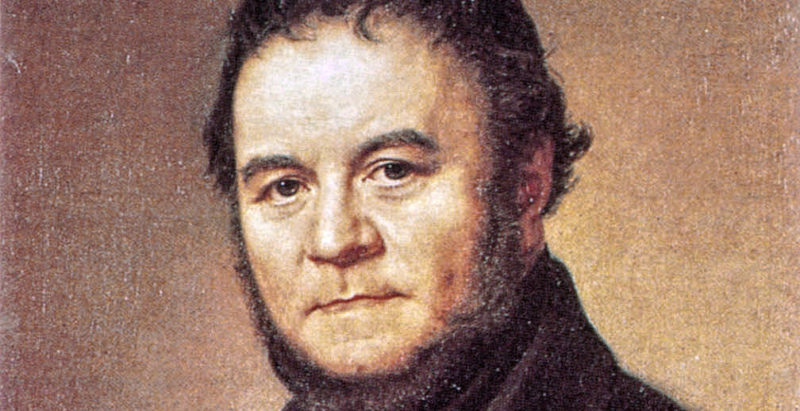We explain what the report is, how is its structure and classification. Also, what are its characteristics and what is reportage 2.0.
What is a report?
The report is a type of journalistic narration that recomposes events of a news nature and discloses them for informational purposes. It is considered a documentary genre, although it may contain subjective information from its author, but different from the opinion column or the chronicle , much more permissive in terms of style.
The report must be as restrained as possible in the transmission of positions regarding what is narrated , as in almost all branches of journalism ; Even so, a good level of analysis of what is referred to and a deep understanding of the subject are expected from a report, which gives the author a certain protagonism.
The reports are often accompanied by interviews or other types of informative approaches. He is often considered an example of investigative journalism.
Background of the report

The birth of reporting is closely linked to that of the written press . News writers fed the first rudimentary publications, such as newsletters and pamphlets, with narratives of interest to the locality, gossip, matters that attracted attention and were in some way of public interest.
In the 19th century, reporting emerged as we know it , hand in hand with news consortiums and the need, for example, of witnesses in the great world wars and sources of information located at the scene of the events, without having to wait. at the end of the event to review it. The word reporter was first used by Stendhal in 1829.
Structure of the report
There are many ways to report, and the more authorial journalists can pretty much do whatever they want. However, the traditional structure is more or less as follows:
- An index, summary, or headline. Where information is condensed and very quickly.
- An entry paragraph. Where the reader's attention is captured and immediate information is provided to situate himself in the context of the investigation .
- The body of the report. Where is the bulk of the information.
- A closure. Which can be closed (yields conclusions) or open (invites the reader to draw their own).
Virtues expected from the report

Two great virtues are expected from every report, in principle:
- Completeness. It is expected that a report exhausts the available sources on a topic or defines the informative framework from which it is nourished.
- Objectivity. While this is a high point in journalism , a certain honesty about its sources, its own research, and its approach to the subject is expected from a report. This does not necessarily contradict taking a position or preparing a reflection, but it requires an ethical and informed approach to the subject.
Report Resources
A good report makes use of scriptural and rhetorical resources (metaphors, contrasts, powerful turns of expression), as well as intertextuality ( interviews , quotes, short stories) and in many cases photographic or audiovisual support.
Graphic Reports

It should be noted that the arrival of photography and its close relationship with journalism gave rise to numerous photo-reports, characterized by the same principles exposed here, but in them the visual document has much more prominence than the written text . In those cases, it is the text that is at the service of the points of view expressed in the photographic account.
Types of report

There are different types of report, according to the type of information they want to cover and the types of discourse they use for it:
- Scientific. It addresses a dimension of technological or scientific knowledge and explains and interprets it in lay terms.
- Research. Without leaving aside the news framework, the journalist delves into a topic or event from multiple angles, following it up and completing a true informative dossier.
- Explanatory. It is interested in news events, and details the aspects of them that are considered relevant at the historical moment in which they occur.
- Narrative. Similar to the chronicle, it addresses the topic of interest from a narrative account of its events.
- Formal. Allegedly objective, he is content to provide information on the subject, somewhat in the manner of news reviews.
- Autobiographical. Coined by the North American journalist Tom Wolfe, this report assumes the journalist himself as a pivot to delve narratively and descriptively into a certain theme.
- Descriptive. It addresses its specific theme based on the journalist 's capacity for observation and detail, to reconstruct impressions taken in person.
Types of information source
The news source of a report can be as varied as the courage and talent of the journalist allows . Stories, informal interviews, everything can contribute to the writing of the article, although there are much more reliable and verifiable sources such as written documentation, books, publications, newspapers, radio or television broadcasts .
Great Reporters

There have been remarkable reporters in history , especially in adverse political and social conditions, which often cost them dearly. A notable case is the Argentine Rodolfo Walsh , who secretly published reports denouncing the last Argentine military dictatorship , and whose brave work cost him his forced disappearance and assassination.
A less unfortunate case is that of Joseph Pulitzer, the inspiration behind the award that honors him today , whose work as an investigative reporter shed much light on the networks of corruption in large international economic consortiums, thus opposing truly enormous powers and promoting honest and committed journalism.
The importance of reporting today
Facing today's hyper- informed world, in which the role of the media is constantly questioned, the report gains importance in the face of its enormous expressive possibilities and the construction of a point of view . In fact, it could be said that there is currently a proliferation of points of view that does not always contribute to the democratization of information.
The report 2.0

The Internet and new technologies seem to attack the journalistic institution, to the extent that any citizen can become a critical and informed voice on topics of interest and current news.
However, the issue works both ways, as the social networks and the world 2.0 is a quarry giant information for reporters, and digital journalism a way to get their hands on hypertext media, multimedia, making the story a novel experience and more relevant than ever.
On the other hand, the disorderly proliferation of information points of view and actors legitimizes, consequently, the need for informed voices.
The above content published at Collaborative Research Group is for informational and educational purposes only and has been developed by referring to reliable sources and recommendations from experts. We do not have any contact with official entities nor do we intend to replace the information that they emit.
MA student of the TransAtlantic Masters program at UNC-Chapel Hill. Political Science with a focus on European Studies. Expressed ideas are open to revision. He not only covers Technical articles but also has skills in the fields of SEO, graphics, web development and coding. .
Leave a reply
Your email address will not be published. Required fields are marked *Recent post

Sport: What Is It, Types, Risks, Features, Characteristics and Examples

Dogs: Emergence, Features, Characteristics, Feeding and Breeds

Story: Definition, Elements, Structure, Features and Characteristics

